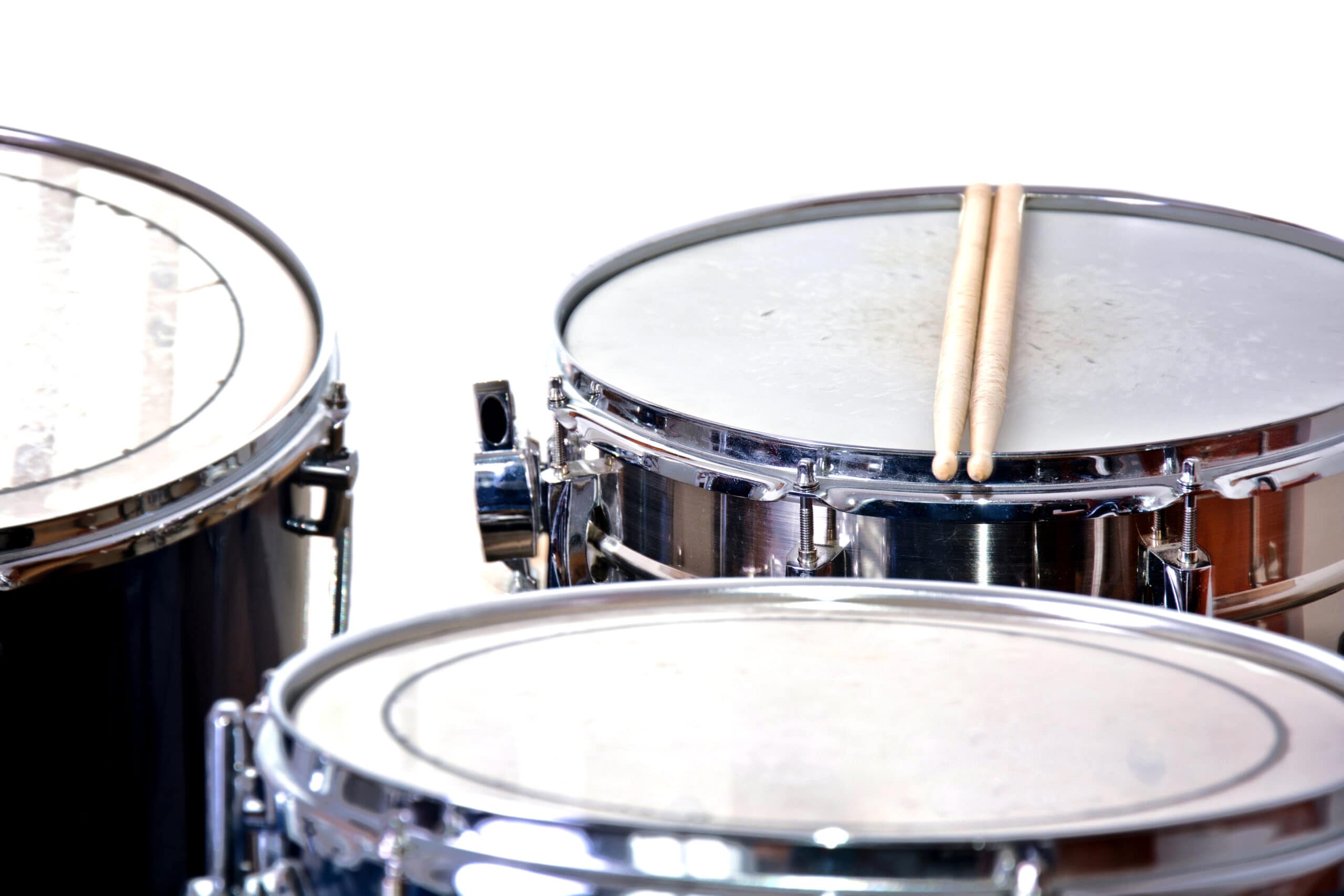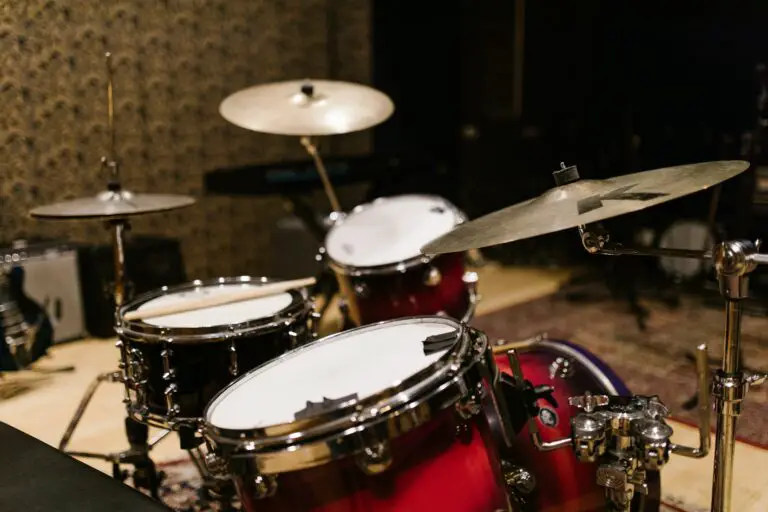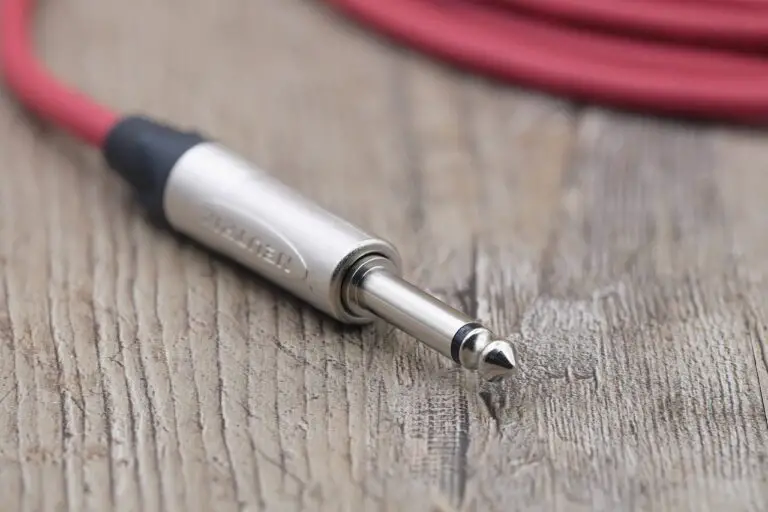Why Does My Floor Tom Echo?
If you’ve been playing drums for a while, you know exactly when something doesn’t sound right. Every drum in the kit can have its own issues from time to time, and one that I tend to notice a lot is echoing that comes from my floor toms.
Floor toms can echo for a variety of reasons, including tuning, acoustics of the room, and drum placement. While it can be annoying, inspecting each of these reasons is the most certain way to eliminating this echo for good.
In this article, I’ll break down these most common reasons, and give some tips I’ve gathered over the years on how to minimize or prevent this issue.
Reasons Your Floor Tom May Be Echoing
Unwanted echoing in your floor tom can be a drummer’s nightmare, turning a crisp beat into a muddy mess. Fortunately, there are several methods to tackle this issue and ensure your tom sounds clear and defined. Here’s a breakdown of the most effective strategies:
1. Drum Dampening:
- Purpose: Dampening reduces the sustain and overtones of a drum, helping to control unwanted resonance.
- Methods:
- Moongels: These are sticky gel pads that can be placed on the drumhead to control overtones.
- Tape: A piece of duct tape or gaffer tape can be used, but be cautious as it may leave residue.
- Dampening Rings: These are circular rings that sit on the drumhead’s perimeter, reducing overtones.
- Internal Muffling: Some drummers use pillows or foam inside the drum to reduce resonance.
2. Tuning:
- Purpose: Proper tuning ensures that the drum produces a clear tone without excessive overtones.
- Methods:
- Even Tension: Ensure that the tension is even across all lugs.
- Resonant Head Tuning: Sometimes, tuning the bottom head (resonant head) differently from the top can reduce unwanted overtones.
- Pitch Matching: Ensure that the batter and resonant heads are in harmony with each other.
3. Room Acoustics:
- Purpose: The room’s acoustics can greatly influence how a drum sounds, including the presence of echoes.
- Methods:
- Soundproofing: Using materials like foam panels or bass traps can reduce sound reflections.
- Rugs and Carpets: Placing these beneath the drum kit can absorb some of the sound, thereby reducing echo.
- Room Shape and Size: Be mindful of playing in rooms with parallel walls or high ceilings, as they can amplify echoes.
4. Drum Placement:
- Purpose: The position of the drum in a room can affect how sound waves bounce and produce echoes.
- Methods:
- Distance from Walls: Keeping the drum a few feet away from walls can reduce sound reflections.
- Orientation: Sometimes, simply rotating the drum or changing its angle can make a difference in sound projection.
- Surrounding Objects: Be aware of objects around the drum that might reflect or absorb sound, like furniture or other instruments.
By paying attention to these factors and making the necessary adjustments, you can significantly reduce the echoing in your floor tom and achieve a cleaner, more professional sound.
How To Minimize or Prevent Floor Tom Echo?
The challenge of drum echo, or unwanted resonance, is one that drummers often grapple with. This echo can detract from the clarity and precision of your sound, whether you’re in a studio, on a stage, or practicing in your garage. But fear not, there are several ways to tackle this sonic obstacle.
Drum Dampening
Firstly, consider the art of drum dampening. This involves reducing the sustain and overtones of a drum to eliminate that pesky resonance.
You might have come across Moongels, which are sticky gel pads that you can place directly on the drumhead. They’re great for controlling those overtones.
Alternatively, some drummers opt for the tried-and-true method of using duct or gaffer tape. However, be cautious, as some tapes can leave a residue. If you’re looking for a more internal solution, placing materials like pillows or foam inside the drum can also do wonders.
Proper Tuning
Tuning is another crucial aspect. A drum that’s tuned properly will produce a clear tone, free from excessive overtones or unwanted resonance. This means ensuring even tension across all lugs and harmonizing the batter and resonant heads. Sometimes, a slight adjustment to the bottom head, known as the resonant head, can make all the difference.
Updating The Room Acoustics
Now, let’s talk about the room itself. The acoustics of your environment play a massive role in how your drum sounds. If you’re finding that echoes are a consistent issue, consider investing in some soundproofing materials. Foam panels, bass traps, or even diffusers can be game-changers. Additionally, don’t underestimate the power of a good rug or carpet beneath your drum kit. It can absorb a surprising amount of sound.
Also, be mindful of the room’s configuration. Those with parallel walls or exceptionally high ceilings can be echo hotspots.
Changing Drum Placement
Lastly, think about where your drum set is positioned. Keeping it a good distance from walls can reduce sound reflections. Even a simple action like changing the drum’s angle or orientation can have a profound impact on sound projection. And always be aware of your surroundings. That large bookshelf or sofa near your drum kit? They can influence how sound waves bounce around the room.
DIY Tips for Drum Dampening
Drum dampening is all about controlling unwanted overtones and achieving a cleaner, more focused sound. While there are many commercial products available for this purpose, you don’t always have to break the bank. With a little creativity and some household items, you can effectively dampen your drums. Here are some DIY tips to get you started:
1. The Old Wallet Trick: It’s a classic move you might have seen in jazz clubs. Placing a wallet on the snare drum can help control its ring. The weight and material of the wallet absorb some of the vibrations, leading to a drier sound.
2. Cotton Balls Inside the Drum: For toms or bass drums, placing a few cotton balls inside can help reduce overtones. They move around when you play, offering dynamic dampening that changes slightly with each hit.
3. Use Old T-Shirts: Cut and layer pieces of an old t-shirt on the drumhead. You can adjust the size and number of layers to achieve the desired dampening effect. Secure them with some tape if needed.
4. Tennis Balls: For bass drums, cutting a small hole in the resonant head and placing a tennis ball inside can create a unique dampening effect. Then, the ball bounces around inside, providing both dampening and a punchy sound.
5. DIY O-Rings: Using old drumheads, you can cut out your own O-rings. These rings sit on the existing drumhead and help control overtones, much like commercial dampening rings.
6. Egg Cartons: The unique shape of egg cartons makes them effective sound absorbers. Attach them to the inside of your bass drum’s resonant head for a DIY soundproofing solution.
7. Duct Tape and Paper Towels: A piece of duct tape with a folded paper towel underneath, placed on the edge of a drumhead, can help control ringing. It’s adjustable and allows you to experiment with different levels of dampening.
Final Thoughts
Drum dampening is both an art and a science, a delicate balance of controlling unwanted overtones while preserving the instrument’s natural resonance. Whether you’re a seasoned professional or a budding drummer, understanding the nuances of dampening can elevate your sound to new heights. While commercial products offer great solutions, the world of DIY provides a playground for experimentation, allowing drummers to tailor their sound with precision and creativity.
It’s the journey of exploration, trial, and error that leads to sonic perfection. So, armed with these insights and tips, venture forth and discover the true potential of your drums. After all, in the quest for the perfect beat, every detail counts.









